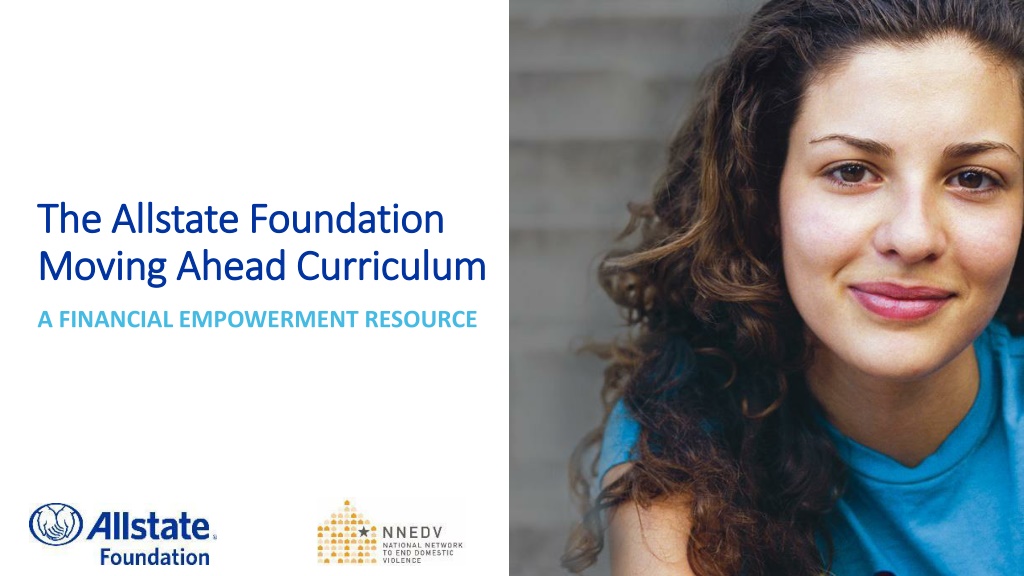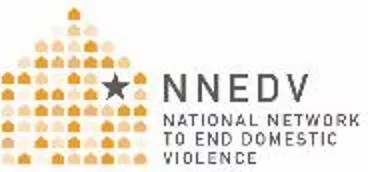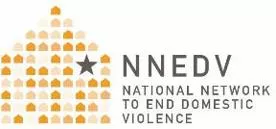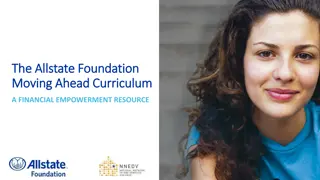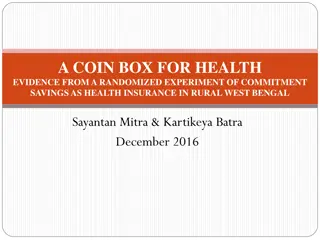Financial Empowerment Through Savings and Compound Interest
Explore the key topics of savings strategies, investment options, and insurance overview in the Allstate Foundation's Moving Ahead Curriculum. Reflect on your comfort level with investing money and the importance of long-term financial planning. Discover the power of compound interest through scenarios and learn how even small contributions can grow significantly over time, setting you up for a comfortable retirement.
Download Presentation

Please find below an Image/Link to download the presentation.
The content on the website is provided AS IS for your information and personal use only. It may not be sold, licensed, or shared on other websites without obtaining consent from the author. Download presentation by click this link. If you encounter any issues during the download, it is possible that the publisher has removed the file from their server.
E N D
Presentation Transcript
The Allstate Foundation The Allstate Foundation Moving Ahead Curriculum Moving Ahead Curriculum A FINANCIAL EMPOWERMENT RESOURCE
MODULE 5 Long Long- -Term Planning Term Planning Key topics covered in this module include: Savings Strategies Investment Options Insurance Overview Education Opportunities Education Finances
Reflection On a scale of 1-10, how comfortable are you with investing money? What have you been told about investing? How much do you think you will need to retire comfortably? Do you think you are doing enough for your retirement?
MODULE 5 Savings Strategies Savings Strategies
Earning Interest on Your Money Matters May seem boring but important to take advantage of it. Compare these three savings scenarios: 20 year-old makes a one-time retirement contribution of $5,000 8% annual return At 65 grows to $160,000 39 year-old makes a one-time retirement contribution of $5,000 8% annual return At 65 grows to $40,000 20 year-old made annual contributions of $5,000 every year 8% interest At 65, retirement would be $1.93 million! 8 times what she contributed
Compound Interest For many of us, $5,000/year is impossible that s okay! Start with an amount that works for you and your budget Consider a percentage of your income; that way when your income increased, so does your retirement contribution If you make $25,000/year 2% would be $500/year or $40/month
Making Compound Interest Work For You The secret to saving money is the miracle of compound interest and growth. By saving and investing just $40 a month at 8% growth. Would result in over $13,000 growth and $23,000 balance. Total Deposit Total Growth Year Deposit 8% Growth Balance 1 $480.00 $21.17 $480.00 $21.17 $501.17 2 $480.00 $62.49 $960.00 $83.66 $1,043.66 3 $480.00 $107.20 $1,440.00 $190.86 $1,630.86 4 $480.00 $155.61 $1,920.00 $346.47 $2,266.47 5 $480.00 $208.00 $2,400.00 $554.47 $2,954.47 10 $480.00 $542.34 $4,800.00 $2,544.67 $7,344,67 15 $480.00 $1,039.14 $7,200.00 $6,668.27 $13,868.27 20 $480.00 $1,777.36 $9,600.00 $13,961.99 $23,561.99 *$480 per year = $10 per week
Things to Consider Start Early. Start Now. The younger and sooner you start, the more time works in your favor. If you didn t start early, there are still options. Federal regulations allow older workers to put more money into retirement plans. Make Regular Investments. Remain disciplined and make savings for retirement a priority. Maximize your contributions, participate in employment match programs, if available. Be Patient. Do not touch the funds. Allow your investments to grow.
MODULE 5 Investment Options Investment Options
Long-Term & Retirement Saving IRA (Individual Retirement Account) Tax advantages Self and/or employer set up Traditional vs. ROTH Pensions Set up by employer/s Guaranteed payout and benefits 401(k), 403(b), 401(a) Plans Defer income taxes until withdrawn Most are employer sponsored
Calculating Your Retirement Goal Typically, you should be able to live on 70% of your pre- retirement income For example, if you make $50,000/year prior to retirement, you will likely need at least $35,000/year during retirement
Investment Vehicles Saving Bonds Government issued; typically doubles in value at maturity (denominations $50- $10,000); interest accumulated tax-free; pay half it s value and typically doubles when matures Mutual Funds Collection of stocks combined as a single investment Stocks Shareholder of a public company; earnings paid as dividends or retained; may experience loss Bonds Loan to a company; guarantees your loan will be repaid with specific interest; relatively safe Property In most cases and locations, real estate can be a solid, long-term investment.
Estate Planning Don t assume it s not for you. If you will likely have assets you want to protect after your death, take into consideration the following now: Establish a Will: without it, the laws of your state will decide who receives your property; if you don t designate a legal guardian for any dependents, a court will decide who will take care of them Purchase Life Insurance: can provide cash to your survivors; keep beneficiaries current Power of Attorney: clearly states your wishes regarding healthcare and property and designates a person responsible
Community Programs Variety of asset-building programs to help reach financial goals: Match Savings Accounts Savings accounts matched by public or private sources Individual Development Accounts (IDAs) A type of match savings program; must be income eligible and for the following purposes: education, home purchase or micro-enterprise Micro-Enterprise Development Programs Small capital investments to build micro-business; local and state Small Business Administration (SBA) may have resources Federal & State Earned-Income-Tax Credits (EITCs) Low-income tax refunds; increase income of working poor and promote saving
MODULE 5 Insurance Overview Insurance Overview
Health Insurance Health & Medical Insurance coverage for prevention, illness or accidental injury Affordable Care Act (ACA) Preventative services must be covered without co-pay; i.e.. Well-Woman visits Contraception Mammograms Breastfeeding supplies HIV Screening Health Savings Account (HSA) Allows you to pay out-of-pockets expenses tax-free Can sign-up with banks, insurance companies; employers may offer as well
Other Types of Insurance Auto Insurance Help repair or replace your car if you get into an accident; may protect you if sued Homeowners or Renters Insurance Life Insurance Term Life coverage only Whole Combines term with investments; builds cash value Disability Insurance Portion of income lost due to disability
MODULE 5 Education Opportunities Education Opportunities
Education and Training Opportunities General Education Development (GED) Considered a high school diploma On-The-Job Training (OJT) Typically provided at the work-site; ranges from one month to one year Community Colleges Associate degree programs; four-year college transfer; typically less expensive than traditional college; may offer open enrollment which means no SAT or ACT required Trade or Vocational Schools Specialized training in specific fields Online Education Offered by many trade, community and four-year colleges Four-Year Colleges & Universities Bachelor s, masters and doctoral degrees
MODULE 5 Education Finances Education Finances
Grants & Scholarships Everyone should submit the FAFSA (Free Application for Federal Student Aid) to determine eligibly for all federal student aid programs; FAFSA.ed.gov Pell Grants Main federal grant program; do not need to be repaid Scholarships Public & private options US Department of Labor search CareerOneStop Women s Independence Scholarship Program specifically for survivors of domestic violence and their children; wispinc.org
Student Loans Private Student Loans Can be risky Typically more expensive than federal loans Federal Student Loans No requirement of a credit check or co-signer Does not require repayments until leaving school or drop below half- time Offers flexible repayment plans and options
Federal Student Loans Direct Subsidized Loans For students with demonstrated financial need Direct Unsubsidized Loan Student does not have to demonstrate financial need to be eligible for loan Direct PLUS Loan Loans made to graduate or professional students and parents of dependent undergraduate students; help cover expenses not covered by other financial aid Direct Consolidation Loans Allows borrowers to combine all eligible federal student loans Stafford Loan Awarded on financial need; regulated by federal government Perkins Loan School-based loan for students with exceptional financial need
Saving for Education 529 College Savings Plans Tax-advantage investment plan Prepaid Tuition Plans Purchase future tuition at today s rates College Savings Plans Earnings are based on the performance of the investment; tax- free for qualified expenses
Available Tax Credits & Deductions The American Opportunity Credit Allows you to claim up to $4,000 in qualified education expenses Can result in up to $2,500 in tax credits per student, per year The Lifetime Learning Credit Reduces the federal tax liability, up to $2,000 per student (20% of eligible costs), per year for qualified educations expenses If you borrow to finance education, you may be able to take an adjustment to income for interest paid on student loans Maximum interest deduction is $2,500 per year Results in reducing your adjusted gross income and tax liability
The Allstate Foundation The Allstate Foundation Moving Ahead Curriculum Moving Ahead Curriculum A FINANCIAL EMPOWERMENT RESOURCE
